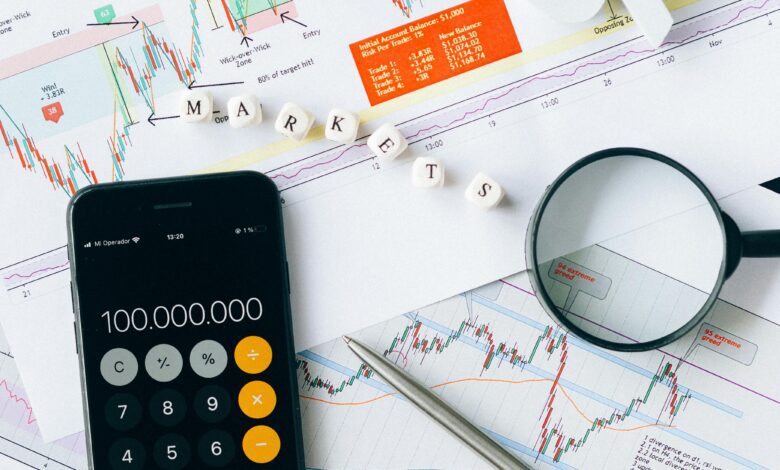Decoding Currency Movements: Harnessing Economic Indicators for Predictive Insights

In the fast-paced world of currency trading, the ability to anticipate market movements can be the difference between profit and loss. At the heart of this predictive power lies a set of tools known as economic indicators—vital metrics that provide insights into the health of a country's economy. From employment rates to inflation statistics, these indicators serve as barometers of economic performance, influencing investor sentiment and driving currency fluctuations. In this article, we will delve into the intricate relationship between economic indicators and currency movements, offering a comprehensive understanding of how these key players shape the financial landscape. We will explore the dynamics of economic data and its profound impact on currency markets, equipping you with practical strategies to leverage this knowledge for informed trading decisions. Whether you're a seasoned trader or just starting out, understanding how to interpret and utilize economic indicators can enhance your ability to navigate the complexities of currency trading with confidence.
- understanding-economic-indicators:-the-key-players-in-currency-fluctuations“>
1. Understanding Economic Indicators: The Key Players in Currency Fluctuations
Economic indicators are vital tools for traders and investors looking to predict currency movements. These statistics provide insights into a country's economic health and can significantly influence the strength of its currency. Understanding these indicators is crucial for anyone involved in the foreign exchange market.
At the core of economic indicators are two main categories: leading and lagging indicators. Leading indicators, such as consumer confidence and manufacturing activity, offer forecasts about future economic performance. They can signal potential growth or contraction before it actually occurs, allowing traders to position themselves ahead of movements in currency values. For example, an uptick in manufacturing activity may indicate a strengthening economy, potentially leading to an appreciation of the currency associated with that economy.
Lagging indicators, on the other hand, reflect the state of the economy after changes have already occurred. Common lagging indicators include the unemployment rate and GDP growth. While they provide valuable context, they are less useful for predicting immediate currency movements. However, they can confirm trends indicated by leading indicators, helping traders gauge the overall economic trajectory.
Among the most closely watched economic indicators are interest rates, inflation rates, and trade balances. Central banks use interest rates to control monetary policy, and changes in these rates can lead to significant currency fluctuations. For example, if a central bank raises interest rates, it typically strengthens the currency, as higher rates attract foreign investment seeking better returns.
Inflation rates also play a crucial role in currency valuation. A country experiencing high inflation may see its currency depreciate as purchasing power diminishes. Conversely, low inflation often correlates with a stronger currency, as it suggests a stable economic environment.
Trade balances, which measure the difference between a country's exports and imports, can also impact currency movements. A trade surplus can lead to currency appreciation, as foreign buyers need to purchase the domestic currency to pay for exported goods. Conversely, a trade deficit may weaken a currency, as it indicates higher demand for foreign currencies to pay for imports.
In summary, economic indicators are the key players in the complex game of currency fluctuations. By understanding these indicators and their implications, traders can make informed decisions and better anticipate shifts in the foreign exchange market.
Economic indicators play a crucial role in predicting currency movements as they provide insights into the health and performance of an economy. Investors, traders, and analysts closely monitor these indicators to gauge potential shifts in currency values, which can be influenced by a myriad of factors including interest rates, inflation, and overall economic growth.
One of the primary indicators to consider is the Gross Domestic Product (GDP), which measures the total economic output of a country. A rising GDP typically signals a robust economy, attracting foreign investment and potentially strengthening the national currency. Conversely, a stagnant or declining GDP can lead to reduced investor confidence, resulting in currency depreciation.
Inflation rates are another critical factor. Central banks often adjust interest rates in response to inflationary pressures; higher inflation can lead to higher interest rates, which tend to attract foreign capital and bolster the currency’s value. Conversely, low inflation may result in lower interest rates, which can weaken a currency as investors seek higher returns elsewhere.
Employment figures, such as the unemployment rate and job creation numbers, also provide valuable insights. A strong labor market typically indicates a healthy economy, which can enhance currency strength. Economic indicators such as the Non-Farm Payrolls (NFP) report in the United States are closely watched by traders for signs of economic momentum and potential central bank policy changes.
Additionally, trade balances, which measure the difference between a country's exports and imports, can influence currency movements. A positive trade balance (surplus) suggests that a country is exporting more than it is importing, which can lead to increased demand for its currency. On the other hand, a trade deficit can weaken a currency as it implies that more money is flowing out of the economy than is coming in.
Consumer confidence indices and retail sales figures are also essential indicators. High consumer confidence often leads to increased spending, driving economic growth and potentially strengthening the currency. In contrast, declining consumer confidence may signal economic troubles ahead, leading to currency depreciation.
In summary, understanding how to interpret these economic indicators allows traders and investors to make informed predictions about currency movements. By analyzing the interplay between various indicators, one can gain a clearer picture of the economic landscape and anticipate potential changes in currency values, ultimately leading to more strategic investment decisions.





